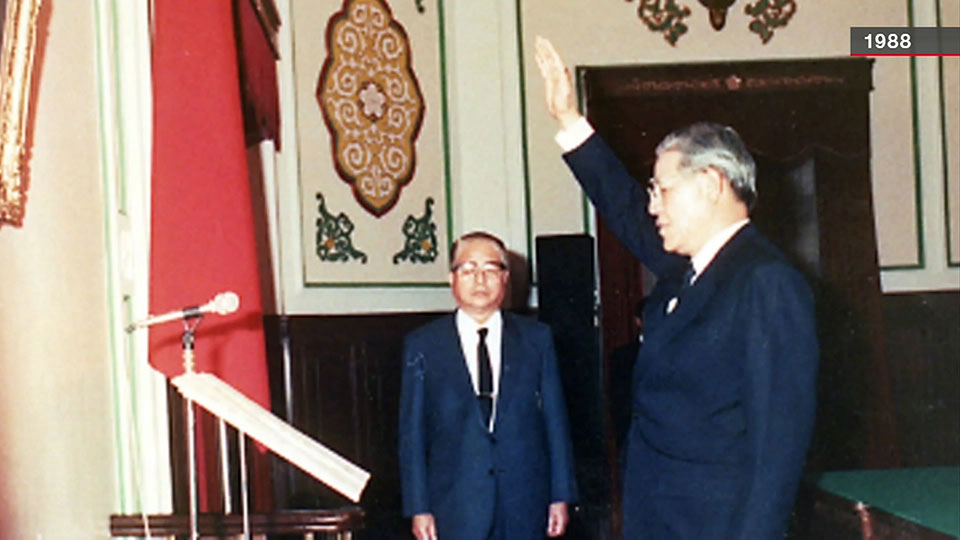The nickname "Mr. Democracy" stuck with Lee thanks to his role in bringing about direct elections on the island after decades of Nationalist Party dictatorship.
Lee was born in Taiwan in 1923 under Japanese rule. After studying at Kyoto University in Japan, he returned to Taiwan at the end of World War Two.
He entered politics in the 1970s, at a time when most high-ranking officials were from mainland China. Despite that, he rose to become an influential figure within the Nationalist Party. Lee took over as president when Chiang Ching-kuo died in 1988. As the first Taiwan-born leader, he pursued a program of democratic reform.

He faced some pushback. At the time, many people cherished Taiwan's ties with mainland China. Some still look back at the change in course with mixed feelings, but today, Taiwan stands as one of Asia's most vibrant democracies.
Contrasting fates
In contrast to what's happening to Hong Kong, Taiwan has the power to decide its own fate, so the impact of Lee's legacy is clear.
"Lee was very clear-sighted," says Matsuda Yasuhiro, a professor at the University of Tokyo. "He thought about how Taiwan should react if China imposed direct rule on Hong Kong or Macau, and made laws and policies to protect Taiwan from the same."
Lee's belief in the importance of Taiwan's democracy has inspired many, including current President Tsai Ing-wen. She was particularly close to Lee, after working as a policymaker in his administration. Tsai described his death as a "huge loss."

In 1995, Lee became the first leader of Taiwan to visit the United States, although the trip was not official. It led to the Taiwan Strait Crisis, in which Beijing launched a flurry of missiles, apparently to send a message to Lee, who had been seen as backing away from the one-China principle. The US sent aircraft carrier battle groups in response.
The following year, he won a landslide victory in Taiwan's first direct presidential election.
His final years in power were marked by clashes with Beijing. In 1999, he proposed the "Two-State" theory, defining Taiwan's ties with China as “state-to-state, at least special relations between two countries.” Beijing accused Lee of promoting independence.
After Lee's death, Chinese Foreign Ministry Spokesman Wang Wenbin said, “Taiwan independence is a dead end. No individual or force could hold back the historical trend of reunification and revitalization of the Chinese nation.”
Relations with Japan
Known as a Japanophile, Lee made nine trips to Japan after retiring from the presidency in 2000.
In 2007, he toured the country to visit places with links to poet Matsuo Basho’s book, “Oku no Hosomichi.” His journey started at the Basho Memorial Museum in Tokyo. Yokohama Humitaka, who served as his guide, says Lee described the trip as a lifelong dream.
“Lee was well versed in ‘Oku no Hosomichi,’ Yokohama says. “I cannot forget the way he smiled. He seemed to be very excited as he was able to start his journey.”

Lee was outspoken about the role he thought Japan should play on the international stage. During an interview with NHK in 2015, he said that Japan was responsible for maintaining peace in Asia, and it was insufficient to simply depend on the United States.
He said that in the decades that have passed since the end of World War Two, Japan had paid little attention to its position in the world, nor to the role it should play.
Peng Run-Tzu, who advised Lee on Japan policy, recalls that Lee was often frustrated by Tokyo. He says Lee wanted Japan to engage in diplomacy with Taiwan without Chinese interference.

